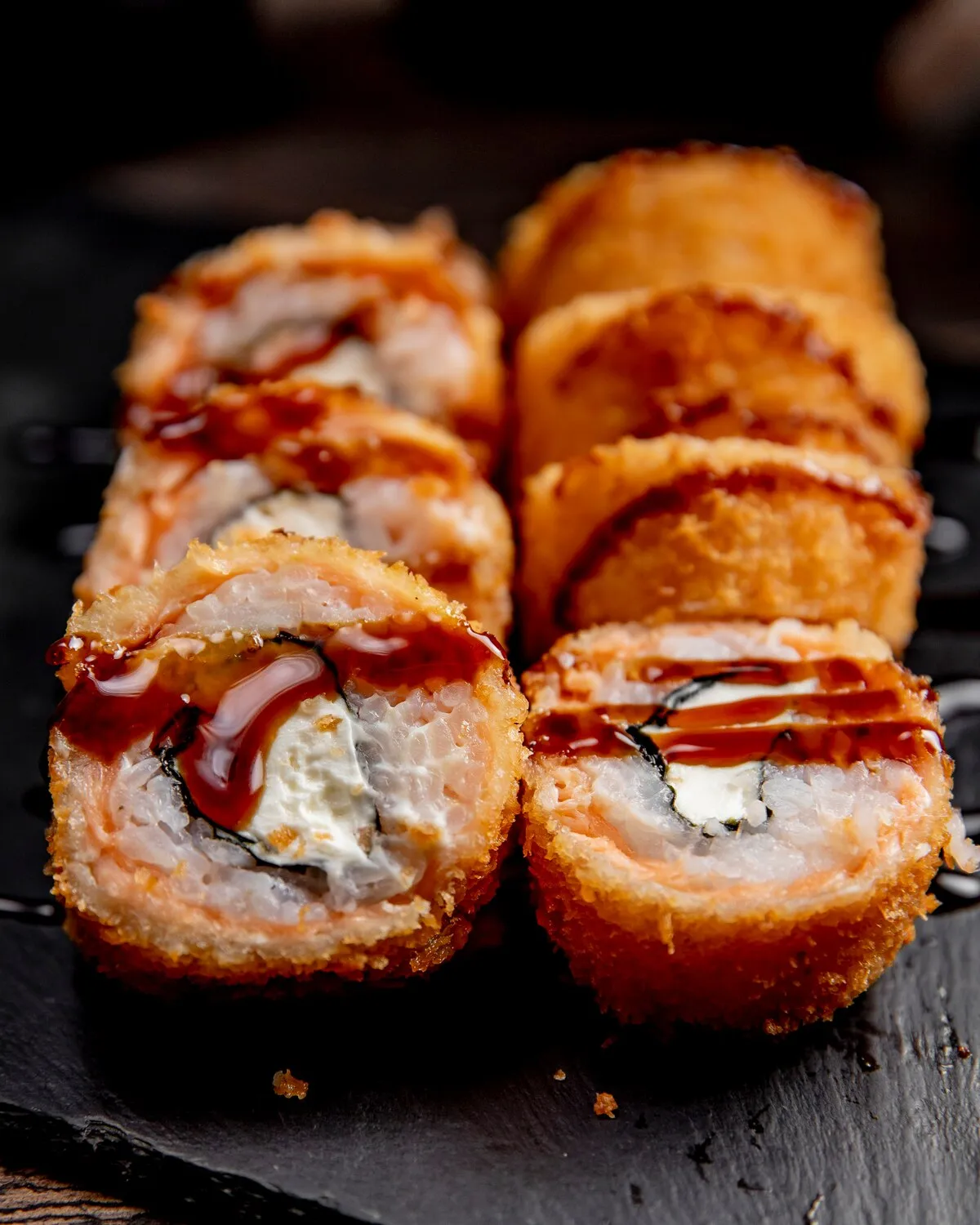
Hot Roll
Deep fried sushi roll, with various fillings.
Nutrition Facts
* The % Daily Value (DV) tells you how much a nutrient in a serving of food contributes to a daily diet. 2,000 calories a day is used for general nutrition advice.
The hot roll, a deep-fried sushi roll, is a relatively modern invention, originating in the United States as an adaptation of traditional sushi to appeal to a wider American palate. It reflects a fusion of Japanese culinary techniques with American preferences for fried foods.
Hot rolls are often viewed as an 'Americanized' sushi option, catering to those who may be hesitant to try raw fish. It's a popular choice in sushi restaurants across the United States and represents a willingness to adapt and innovate within the traditional sushi framework.
Accessibility
Hot rolls often serve as an introductory sushi dish for those unfamiliar with raw fish, providing a familiar and approachable gateway into Japanese cuisine.
Fusion Cuisine
The hot roll exemplifies fusion cuisine, blending Japanese techniques with American preferences, resulting in a unique and popular dish.
Restaurant Staple
It is a common menu item in many sushi restaurants in the US, illustrating its widespread acceptance and demand.
The Hot Roll offers a contrasting flavor profile of warm, crispy exterior and a soft, flavorful interior. Common flavors include savory seafood, creamy avocado, and a hint of sweetness from sauces.
The prominent flavors are derived from the fillings, which often include cooked shrimp, crab (imitation or real), salmon, tuna, or white fish. Avocado adds a creamy texture and mild flavor. The deep-frying process imparts a distinct crispy, oily flavor. Toppings like spicy mayonnaise, eel sauce (unagi sauce), and sriracha add layers of sweetness, umami, and heat. The seaweed (nori) contributes a subtle oceanic flavor. Rice vinegar seasoned sushi rice provides a tangy and slightly sweet base.
Rice Preparation
Use sushi rice properly seasoned with rice vinegar, sugar, and salt. The rice should be sticky enough to hold its shape but not mushy.
Rolling Technique
Roll the sushi tightly to prevent it from falling apart during frying. Use a bamboo mat (makisu) to achieve a firm and even roll.
Frying Temperature
Maintain a consistent oil temperature (around 350-375°F or 175-190°C) for even cooking and a crispy crust. Avoid overcrowding the fryer.
Batter Consistency
The batter should be light and thin for a crispy crust. Avoid thick batters, as they can result in a greasy and heavy roll. Tempura batter is often used.
Cooling Rack
Place the fried rolls on a wire rack to drain excess oil and maintain their crispiness.
Explore additional Sushi dishes and restaurants
Explore SushiDiscover top dining spots and culinary experiences in Guarujá.
Explore GuarujáLearn more about the food culture, restaurant scene, and culinary heritage of Brazil.
Explore Brazil